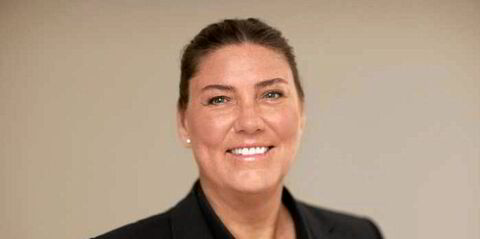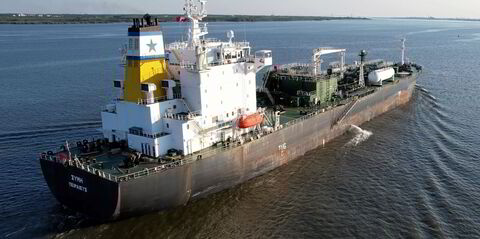Looking ahead, you will see us continue to optimise fuel efficiency. Over the past five years, we have been able to improve our fleet fuel-efficiency profile by about 15%, primarily as a result of executing a comprehensive vessel-renewal strategy.
Fleet performance remains a key area of focus. Through the implementation of various enhancements, such as energy-saving retrofits and low-friction hull coatings, as well as the adoption of various voyage optimisation strategies, including dynamic speed instructions and advanced weather-routing algorithms, we will continue to be able to improve our emissions intensity performance and reduce our absolute emissions.
Separately, and as a further illustration of our commitment to decarbonisation, we incorporated a sustainability feature into our recently executed bank facility.
This feature essentially incentivises us to achieve energy efficiency operational indicator (EEOI) based targets and, separately, to commit to an annual spend on "green" initiatives. On this point, Eagle Bulk just concluded its first sustainable biofuel voyage.
The scale of the decarbonisation challenge is enormous. While our actions to date continue to deliver meaningful improvements along relevant decarbonisation trajectories, there will be a need for material step-changes.
This will be uniquely challenging for the midsize dry bulk segment, due to the uncertainty around vessel itineraries and the fact that our ships call on hundreds of different ports, including many smaller ones, where the requisite supporting infrastructure will likely be slowest to develop.
For these reasons, we will also continue to engage collaboratively, up, down, and across shipping and tangential industries to accelerate research and development into decarbonisation — and to ensure that we are both supporting and learning from pilot projects.
We believe the industry is already on a course towards decarbonisation, but the velocity needs to increase. The International Maritime Organization’s initial strategy — targeting a 50% reduction of emissions by 2050 — was adopted less than four years ago. While that commitment was considered ambitious at the time, today there is widespread agreement across the industry that the level of ambition must effectively double if shipping is to play its part in keeping the 1.5°C temperature goal of the Paris Agreement on climate change intact.
Next year, primarily through collaborative initiatives, we will continue our call on policymakers to work on delivering a number of enabling measures, including a mechanism for pricing emissions; to fund technological development, scale green fuel supply chains, and close the price gap between conventional and zero-carbon fuels.







